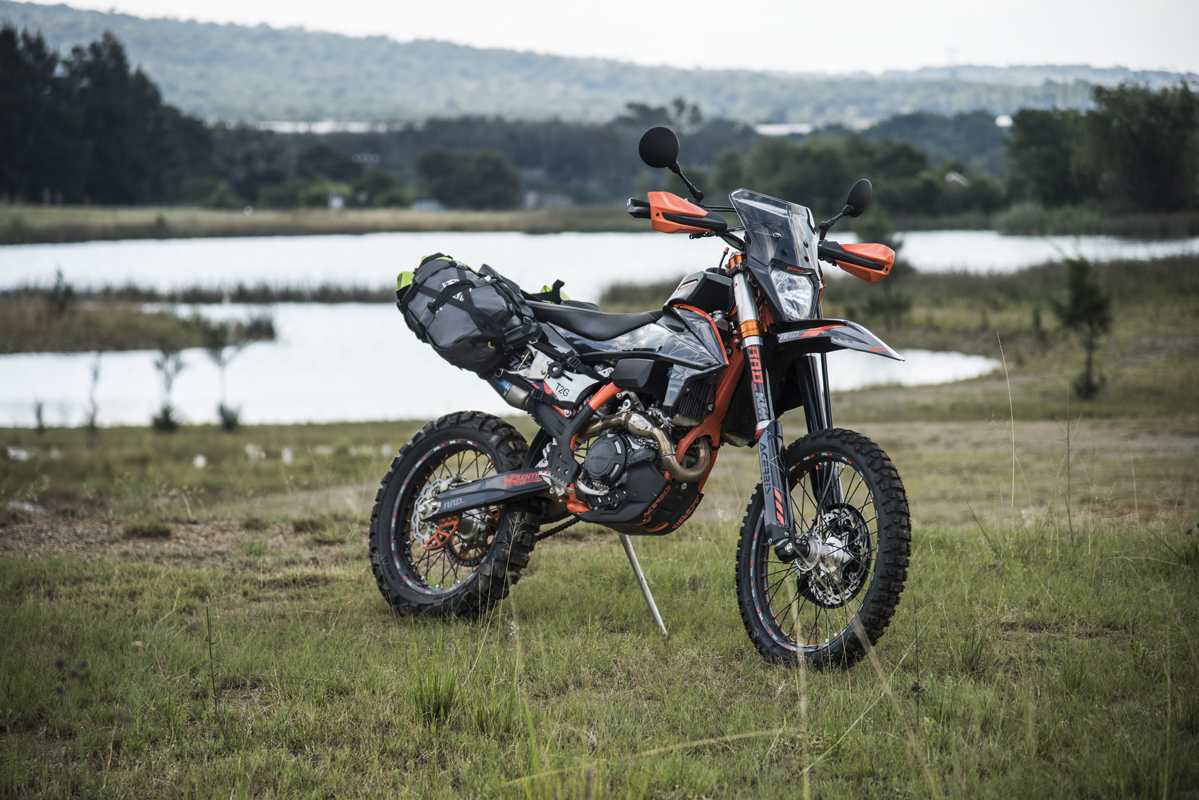
Over the years the ever-so-popular adventure bike market has grown in all directions, in technology, safety, engine capacity and most noticeably, weight. What most riders forget or do not know, is that the origins of the adventure motorcycles were based on dirt bikes—mud slingers that just met the minimum requirements by law to pass roadworthy. So, what happened? Well, to put it in layman’s terms, the word “adventure” took up a whole new meaning, drifting away from the hard-core skilled riding to gravel travel. This meant bikes like your Honda XR 500 and Yamaha XT 500 would later be replaced by BMW’s R 80 G/S, weighing 186kg compared to the Honda’s 123 kg and carrying 19.5 litres of fuel versus your 12 litres in the Honda and 8.8 in your Yamaha.
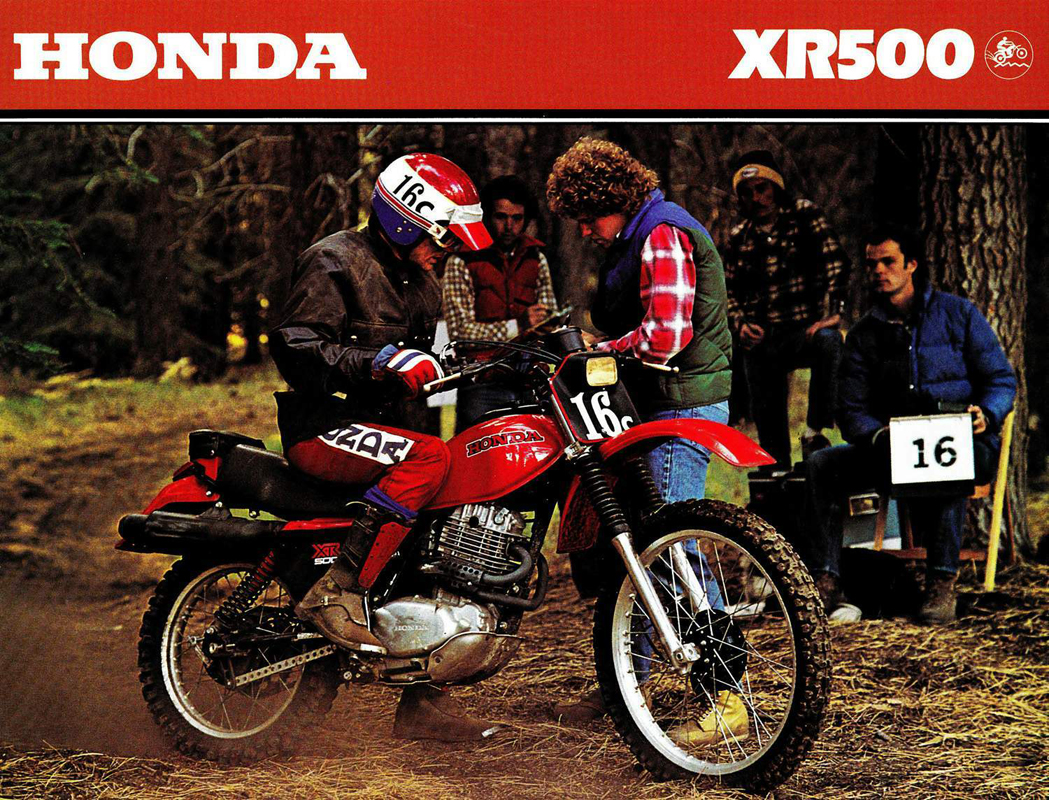
Fast forward to today and many manufacturers, if not almost all of the top dogs, have got a heavyweight and middleweight adventure motorcycle in their line-up. What most manufacturers have come to realise, is that the original adventure bike formula needed to change, thus the middleweight and lightweight adventures were introduced. With middleweights being introduced into the market, we started to see a shift. Riders began to understand how much more they could see on the gravel path, how much easier it was to get there and how much more fun there was to be had on a lighter bike.
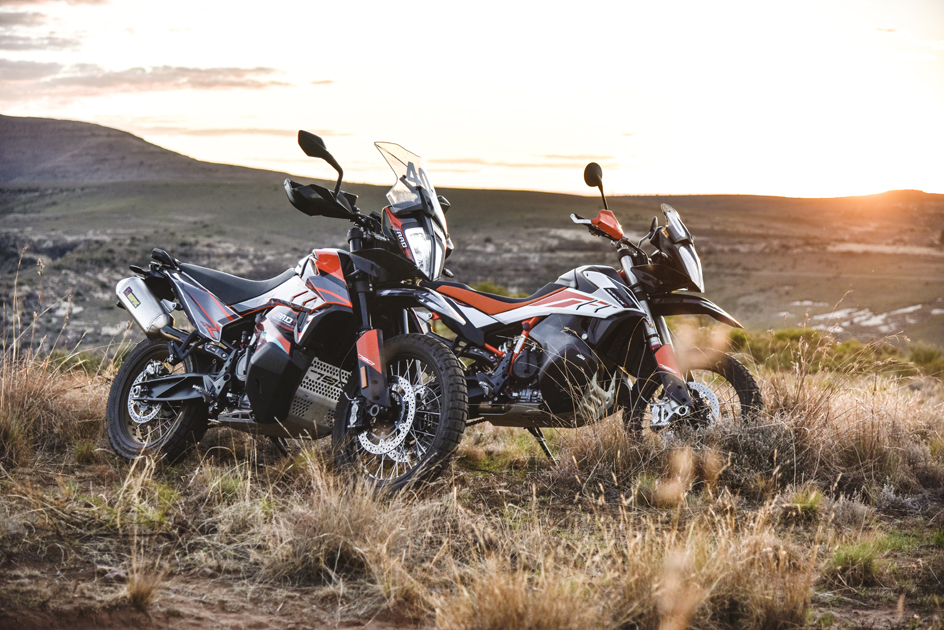
With a teaspoon of light-ish adventure travel down the throat, we are starting to see a shift once again. Your heavyweight adventure bikes have started taking up the touring bike role and light off-road travel. For those who have tasted true adventure, they are either downscaling to the middle class or keeping the big bike and buying a lightweight adventure. You can’t be serious? Indeed, we are seeing older and young generations moving towards the lightweight adventure bike, either for a more dirt-worthy ride or a more manageable means to get to the end destination.
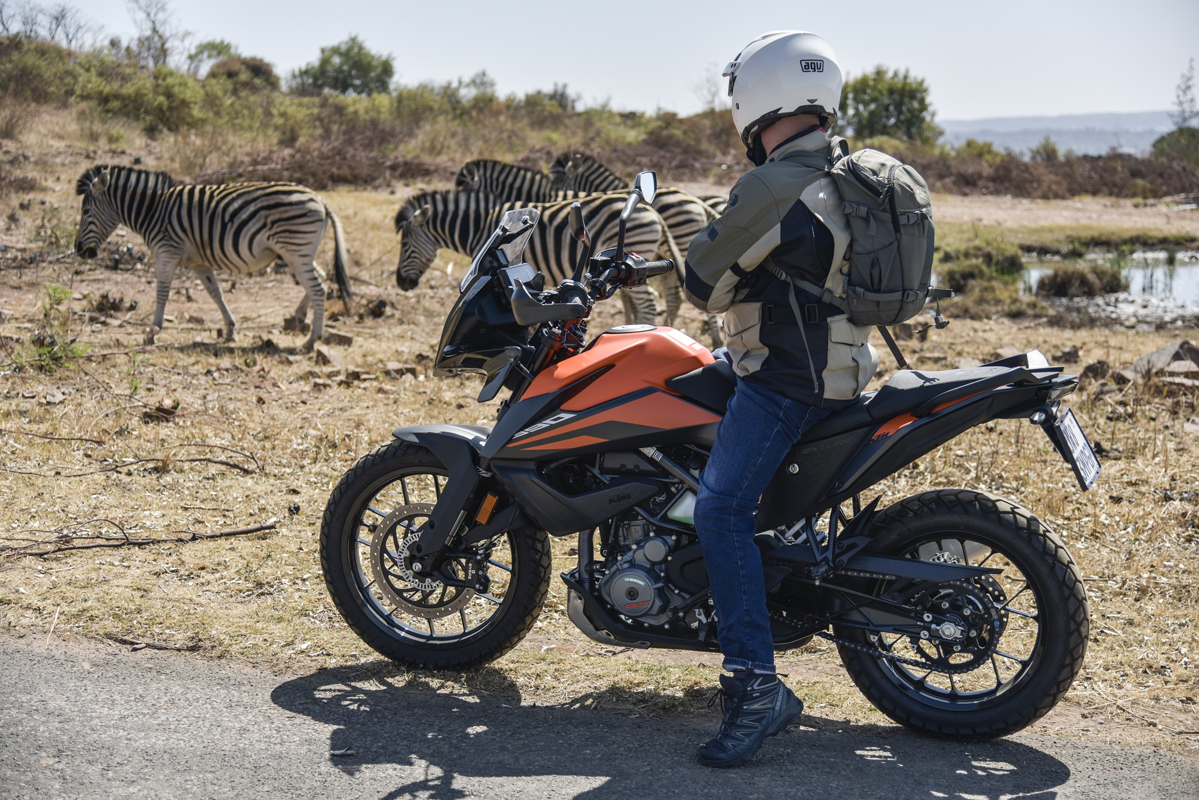
So, what is a lightweight adventure bike in this modern world, is it your bare-bone XR, XT kind of bike or is it the road bike chassis adapted motorcycle, like your KTM 390 Adventure, Honda CB500X and BMW 310 GS? Miguel Lage (Dealer Principal at RAD_KTM) along with a whole plethora of adventure riders seem to think it’s a KTM 500 EXC-F. With two work colleagues already having been convinced by RAD_KTM’s creations, I thought I’d take a ride to find out for myself…
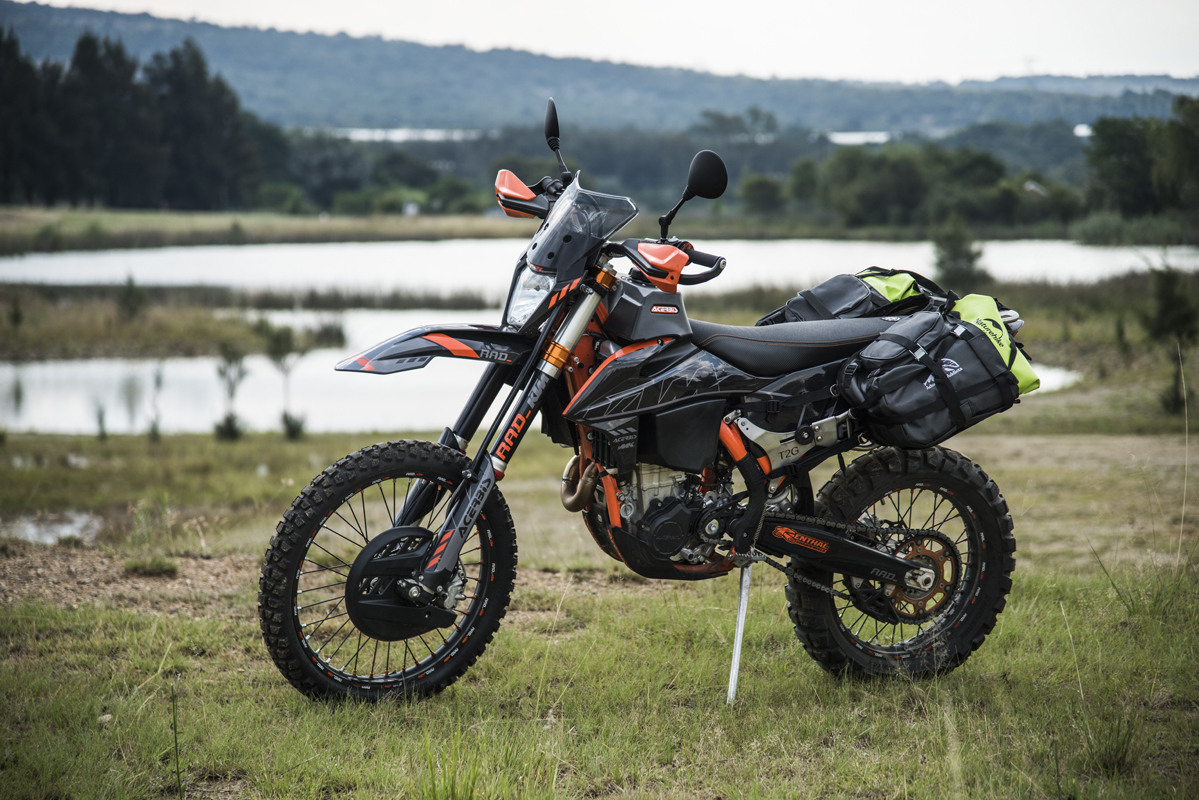
The 500 EXC-F has been the go-to for rally riders, world travellers, desert racers and now the adventurer. This special EXC has been around since 2012 and just like a fine wine it has gotten better over time, and for 2023 we see major updates making their way from the latest MX models. Yet, the 500 stays true to its simple nature and does away with any rider modes or gizmos, aside from an optional TC and map switch. This is the blank canvas that RAD_KTM start their work on and just like the 500, for the last few years, RAD has been developing and testing all of the upgrades to make the 500 EXC-F that much more capable of adventure.
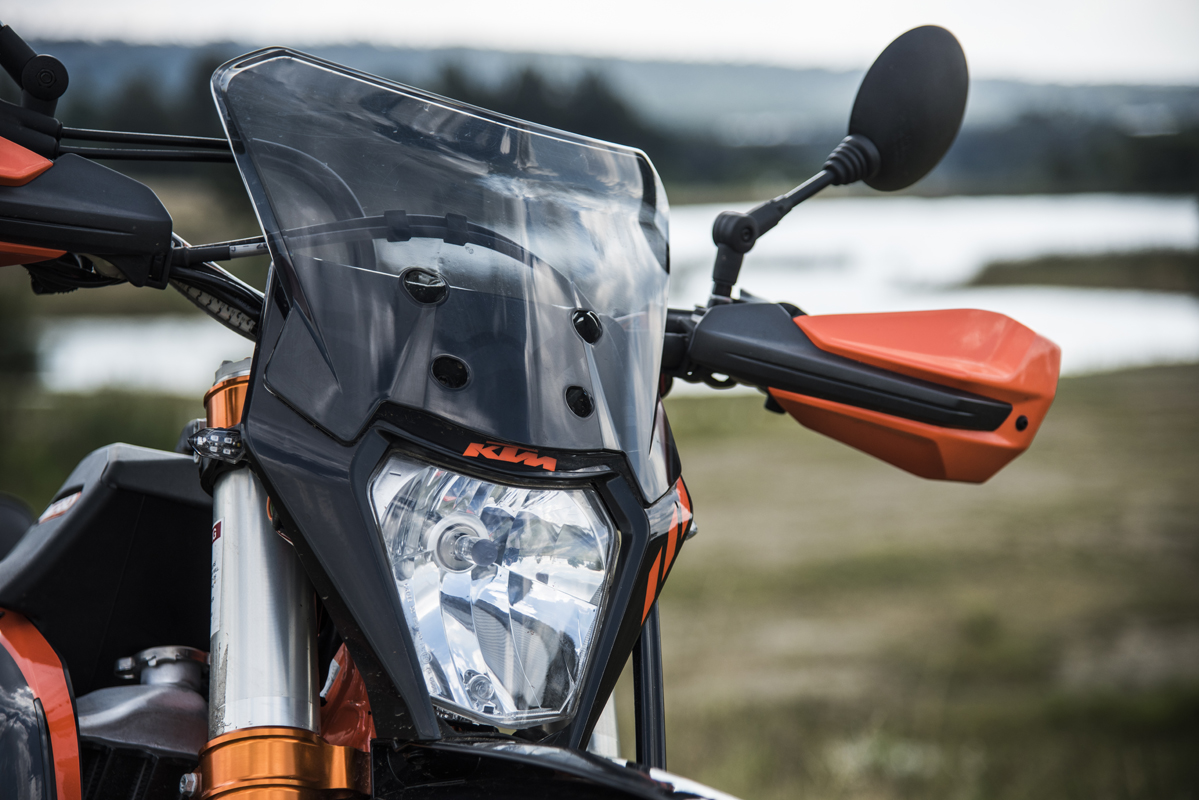
With my adventure kit on and a host of local d-roads at my disposal, I set off to find out what makes the RAD_KTM adapted 500 EXC-F the adventurers’ dream. My first proper day on the 500 saw me travel 150 km of 90 per cent dirt, starting from home, down the tarry stuff towards Graham Road past Silverlakes and right onto my favourite d-road that winds its way over the mountain towards Rosemary Hill, just before you turn onto Boschkop road. This route allowed me to ride up some rocky technical single trail before connecting to the dirt highway that passes Hazeldean Trails and Rosemary Hill. It’s also worth mentioning that we had torrential rain that whole week, so we were dust-free but given slushy mud in return.
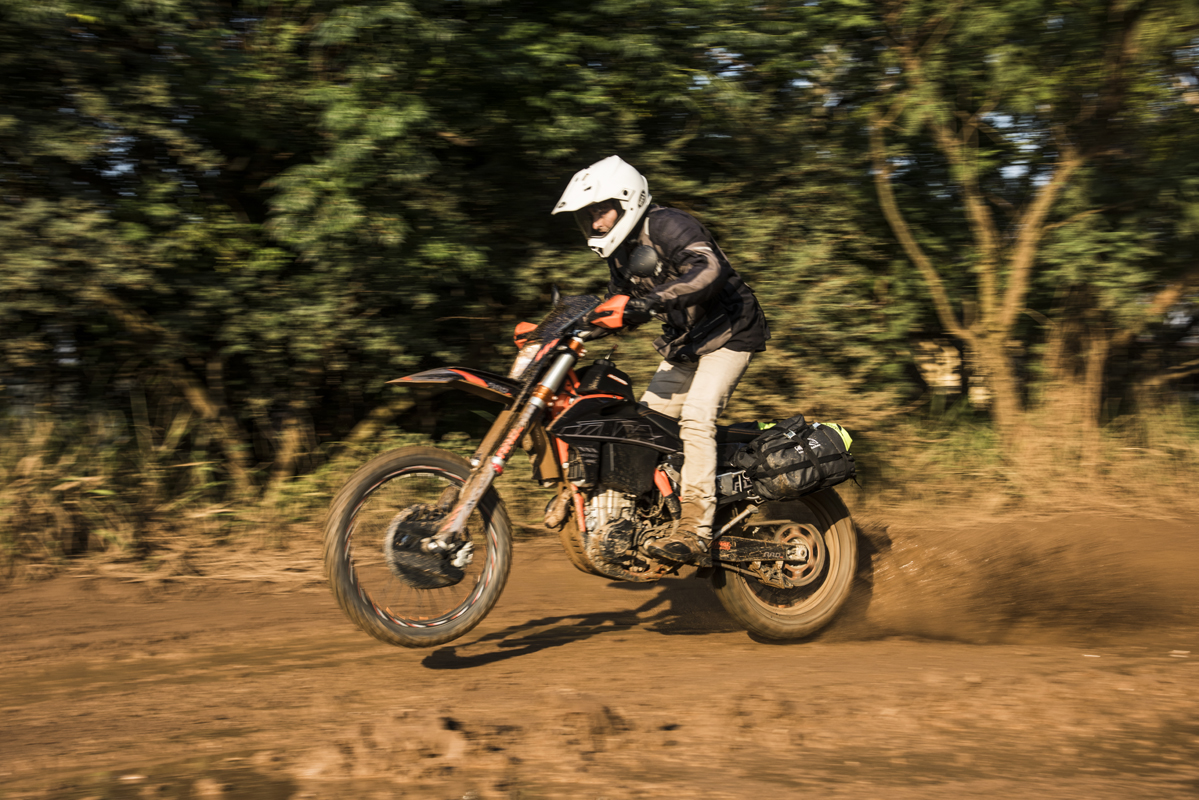
With a short water break, I sat on a rock and took in all of what the RAD team had done. What first appears to the eye is how the EXC still looks like an EXC, meaning no rally-styled tower and no rear fuel tanks to mess with the weight or look of the machine. Instead, RAD has focused on the finer details of this particular build that keeps the bike light but enhances the already factory-ready package.
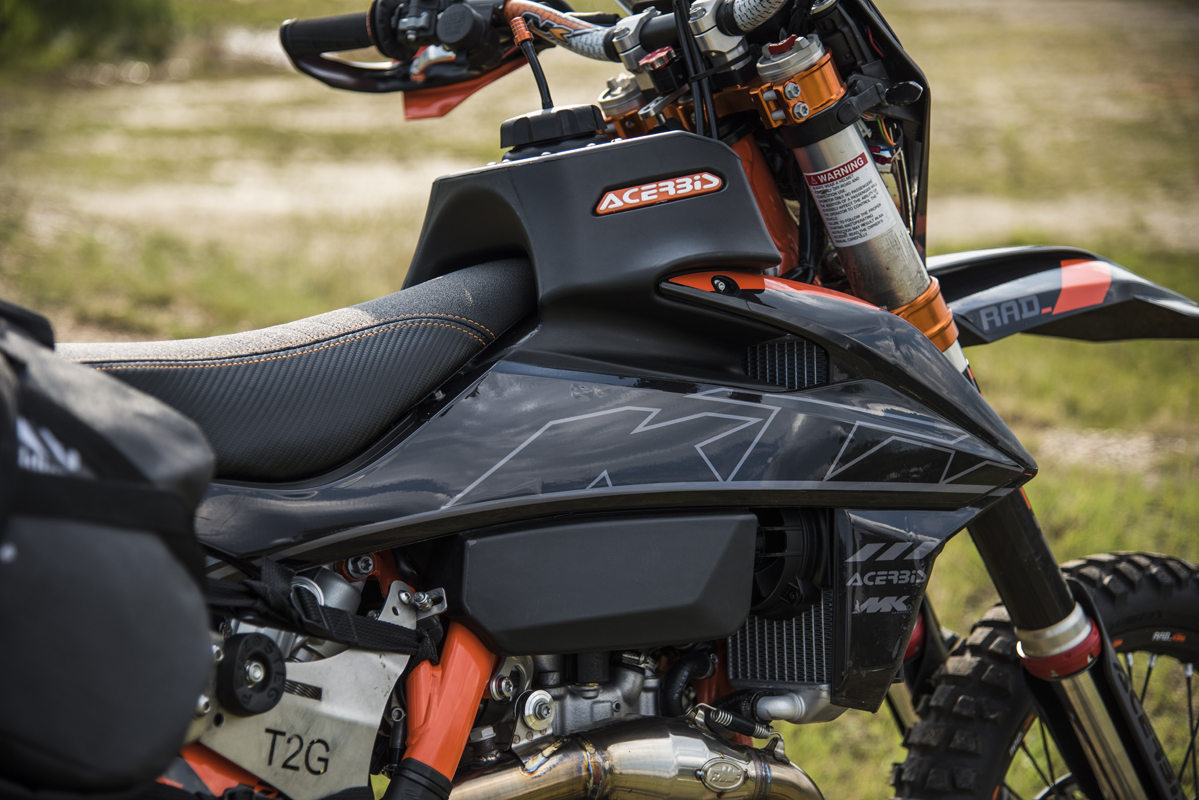
The eye then wanders towards all the Acerbis aftermarket parts, starting at the top with the 15 L tank which replaces the standard 9.2 L engine covers and skid plate. The Acerbis parts further enhance the look, adding to the factory-fitted protection, and the fuel tank takes the 500 into a new world of range—especially if you can get 20 km/L on a good day.
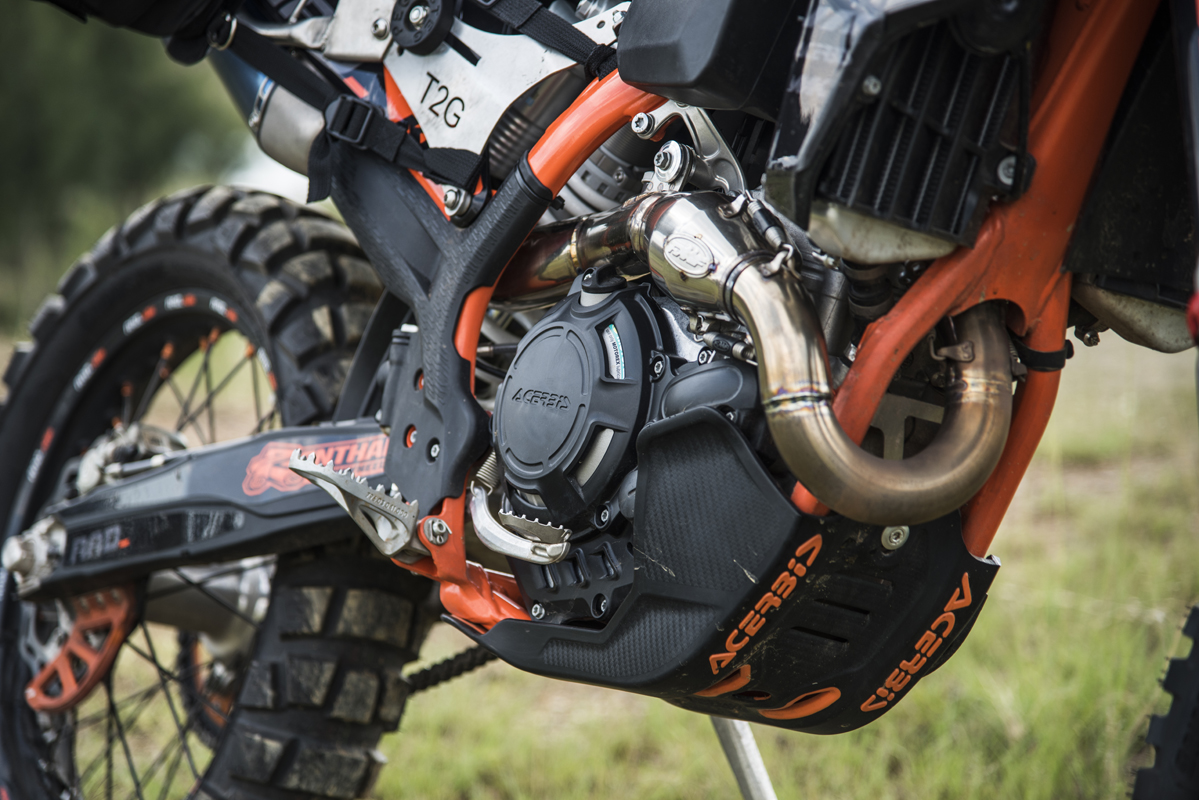
We see some local accessories also being selected by RAD, like the Adventure Addicts soft luggage frame assembly and a Seat Concepts comfort seat. As far as functional accessories go we also have a 7-way steering stabilizer, fly screen, front disc protector, both a USB charge port and a 12V power outlet. These are just a few key upgrades that stand out from the flood of extras put onto this RAD_KTM machine. What must be said, is that a customer can sit down with the team and make a selection from the RAD menu, which we will touch on shortly.
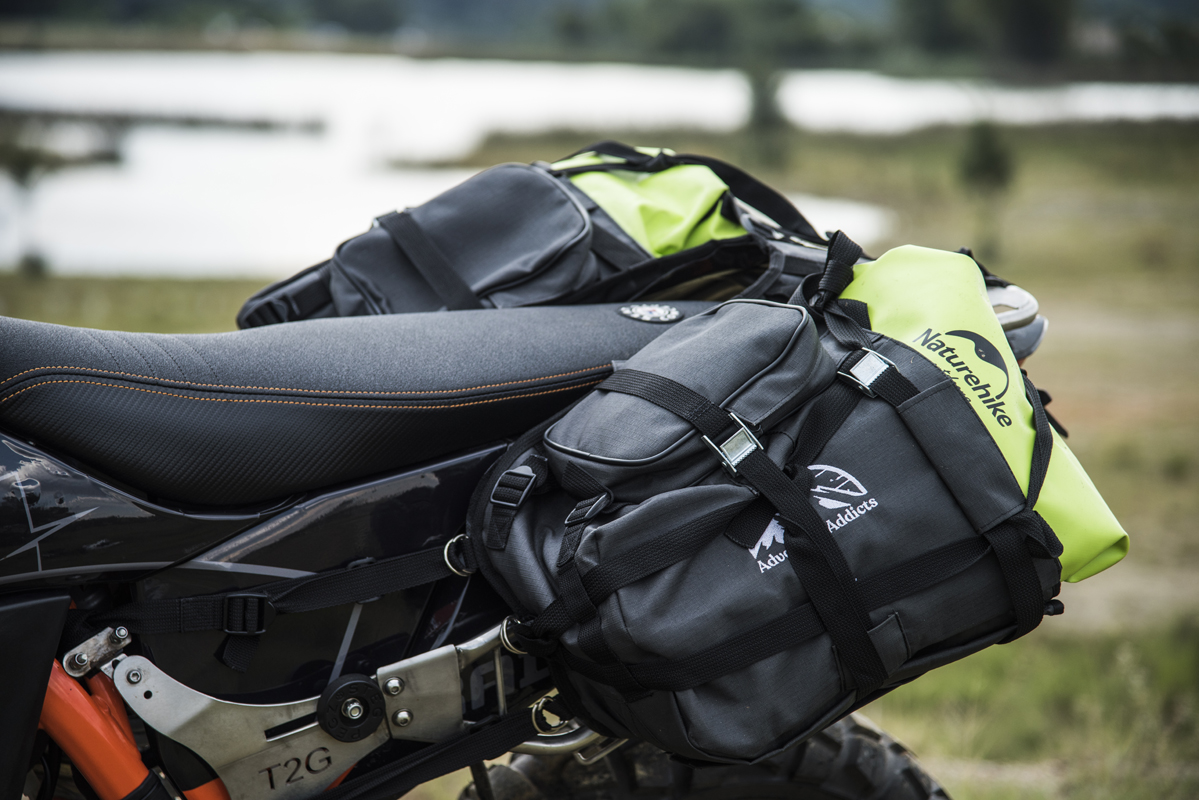
With my water break over, I blasted through some muddy trails, connected with Mooiplaas road and opened up the 500 on a well know train line route called Spoorweg. It was here where I got to see how comfortable the 500 sits at speed, seeing the adjusted 14-48 sprocket allowing the bike to hum at 120 km/h and comfortably accelerate up to 160 km/h. I have to say, the Bridgestone Battlax Adventurecross AX41 tyres were the perfect combo in my opinion, along with the steering stabilizer for this type of terrain. Along with this came a well-damped WP suspension, providing enough grip and travel on the trails and on the rain-drenched tar.
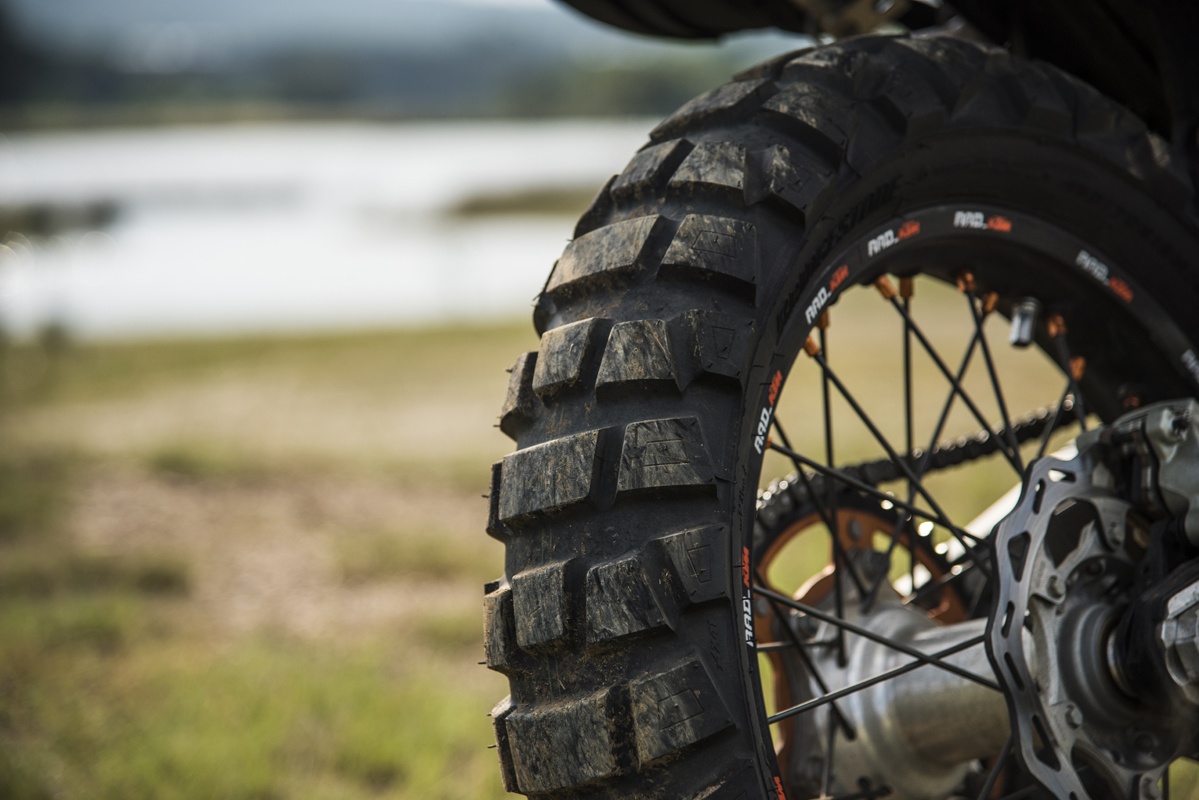
For the rider who needs to spend a little more time on the black stuff, RAD do recommend their 14-45 sprocket conversion which allows the bike to cruise comfortably at 140 km/h and almost reach the 200 km/h mark for you crazy desert riders. Another thing that becomes apparent is how the 500 still feels like a fire-breathing EXC-F! The bike is still light enough to ride like a plastic, and comfortable enough for the long haul thanks to the well-damped suspension and seat. It really does feel like the jack of all trades and the master of fun—a bike you could still take part in an enduro or cross-country race and ride back home on.
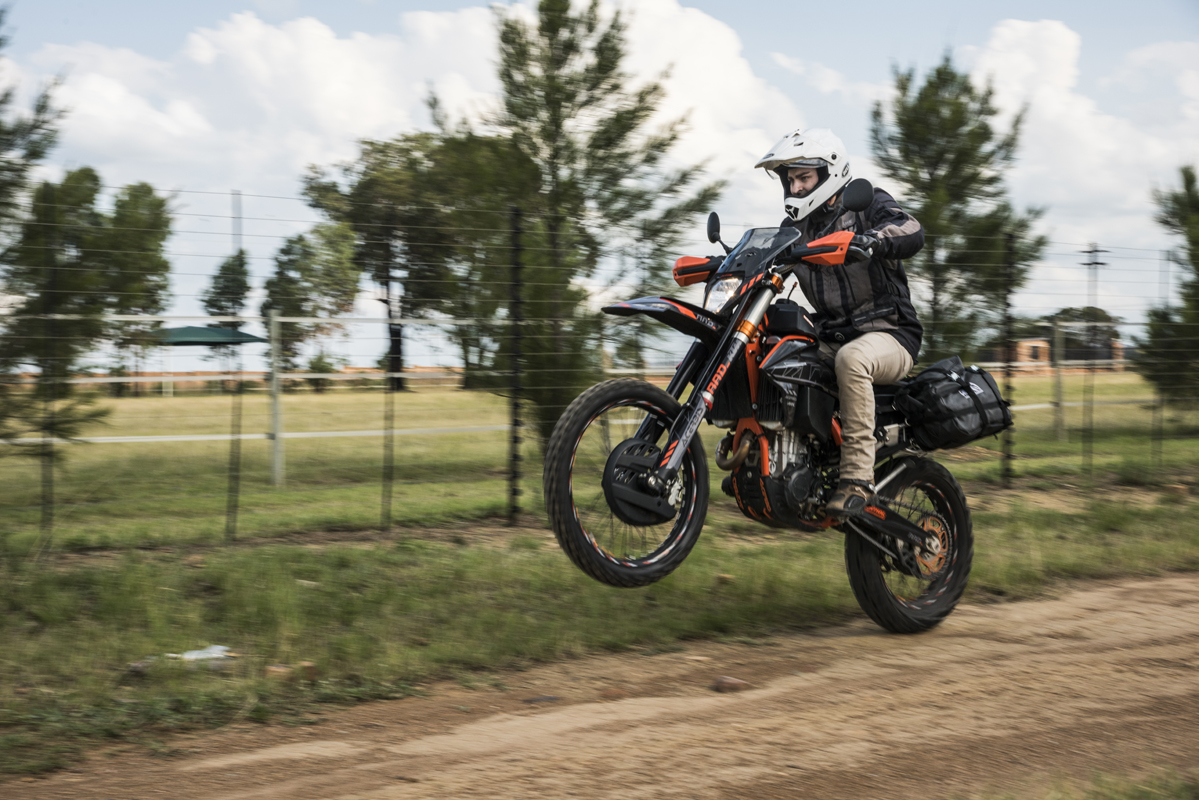
Here’s the biggie! A lot of you share concerns about the service intervals which are essentially on a race-built motor. My answer to this is to just read or see what Aaron Steinmaan has done on his personal KTM 500 EXC-F. This legend spent three years and 140,000 km riding around the world. He started off babying the bike as he says, with 1500 km oil services and progressed to 3000 km intervals before only opening the motor at 870hrs/67,000 km. What Miguel recommends is sticking to a 30hr service interval, but at the same time, it all depends on how hard and where you ride.
So, what is one of these creations going to set you back? There are a host of factors, but let’s start with the first obstacle. You could opt for a standard 500 EXC-F which will cost you R161,999 or you could opt for the SIX DAYS version for an extra 10k which gets you a few bling orange bits up front. The kit that makes the EXC-F truly adventure worth comprises a: 15 L tank, engine covers, skid plate, seat, steering damper and soft luggage frame assembly. This will set you back 42K in addition to the price of the motorcycle. RAD also offers a 20k trade assistance on the current 2023 models for all these upgrades for added value.
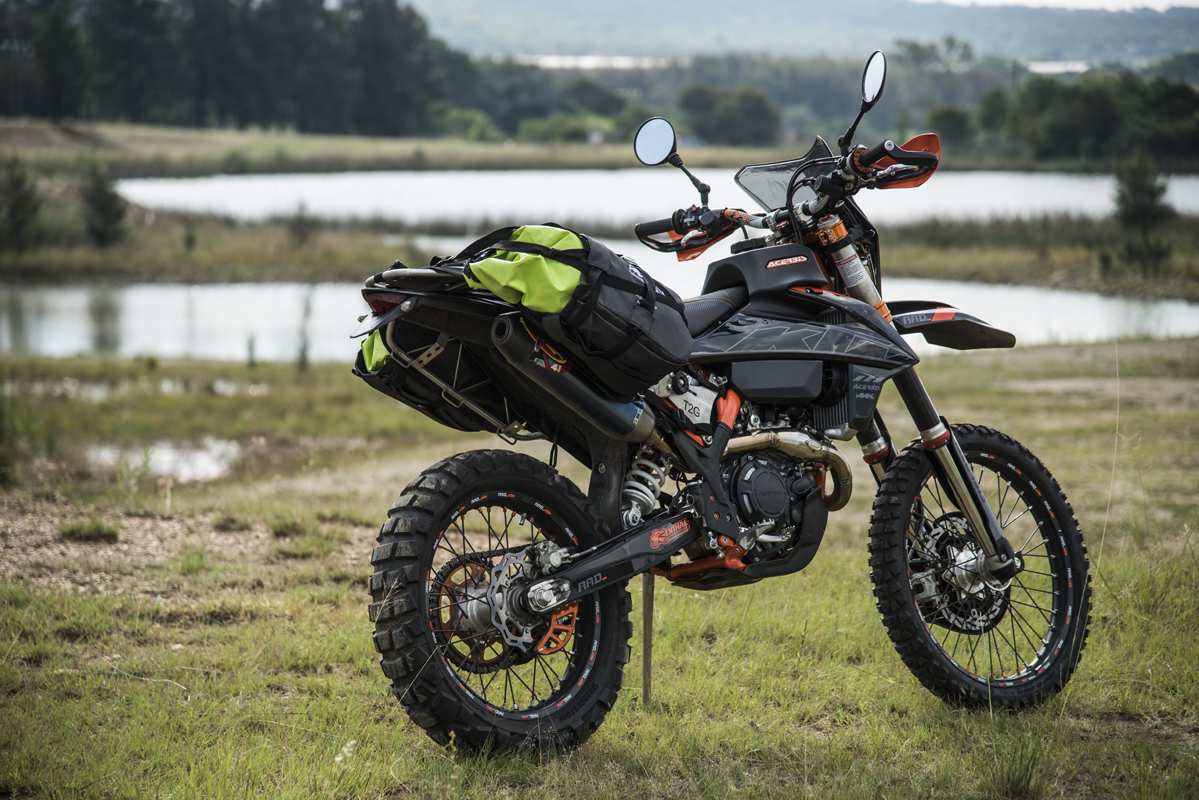
At the end of the day, the 500 EXC-F which pays tribute to the adventure bikes of old, has been taken to new heights thanks to RAD_KTM. The phenomenal off-road capability of this bike will broaden the landscapes of all adventure motorcyclists, leaving you with zero excuses not to ride. So, pay RAD a visit, speak to Miguel or the RAD team and they will take you through the steps of building your dream adventure bike, built to your particular specifications. A converted 500 EXC-F lover… that’s me!





